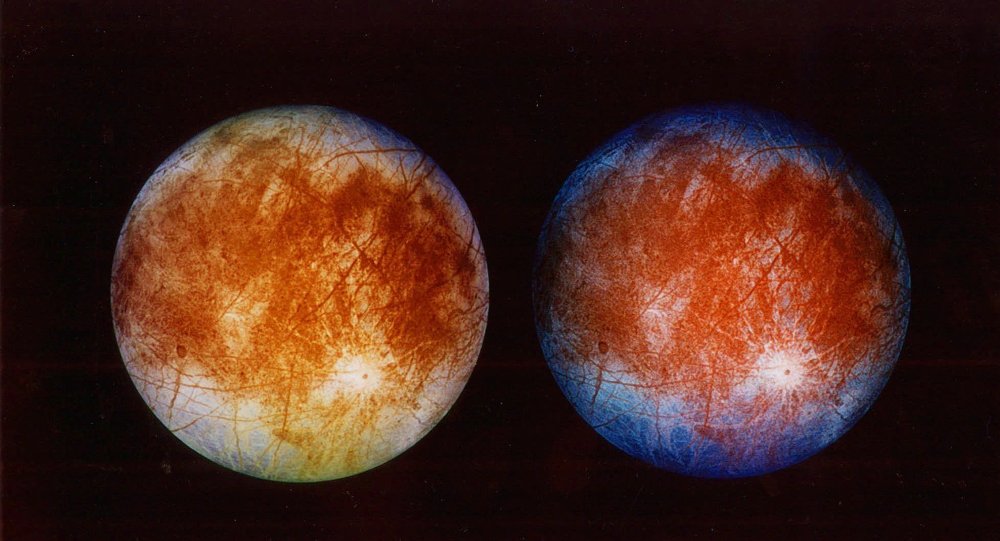
 NASA plans to kick off a number of space missions to the icy Jovian moon of Europa by the mid-2020s, paving the way for a possible landing.
NASA plans to kick off a number of space missions to the icy Jovian moon of Europa by the mid-2020s, paving the way for a possible landing.NASA plans to launch multiple space missions to Europa, the sixth-closest moon of planet Jupiter, and the sixth-largest moon in the solar system; astrobiologists believe that the natural satellite may host extraterrestrial life.
In the early 2020s, NASA plans to conduct dozens of flybys of Europa, paving the way for a mission to land a spacecraft on the Galilean moon and closely examine its smooth, icy surface.
"You gotta figure, if the first one works, then we're going to go to Europa again," said NASA Administrator Charles Bolden during a media event at Aerojet Rocketdyne, a rocket manufacturing company in Los Angeles.
Europa, one of Jupiter's four largest natural satellites, is one of the most mysterious moons in our solar system. It was discovered by Galileo Galilei, an Italian astronomer and engineer who pioneered the use of the telescope, in 1610. It is slightly smaller than Earth's moon: 1,900 miles (3,100 kilometers) wide and completely covered by an icy crust. Many have described its completely smooth surface as resembling that of a billiard ball. Underneath the icy shell the moon is thought to have a liquid water ocean that could be as deep as 100 km. Based on this estimate, it would have slightly more than twice the volume of Earth's oceans.
Scientists believe that Europa's ocean may be capable of supporting life, and that is why astrobiologists have long been seeking ways to launch a probe to the icy moon, Space.com elaborated.
"We need to do incremental approaches to studying Europa. We're going to fly a Europa mission in the 2020s sometime, and hopefully, what we find will whet our appetite and there will be follow-on Europa missions," Charles Bolden emphasized.
In the 1990s and early 2000s, NASA'a Galileo mission gathered preliminary information about Europa by conducting about a dozen flybys of the moon.
On May 26, NASA presented the nine "science instruments" that will travel aboard the Europa spaceship, that the agency plans to send to the mysterious moon in the next decade.
The equipment includes high-resolution cameras, a ice-penetrating radar array, and a heat detector. During 45 flybys of the Galilean satellite, the probe is expected to reach Jupiter's orbit and collect all the necessary information about Europa's surface.
However, a potential surface mission is NASA's researchers' ultimate goal. The first mission to Europa will help scientists develop the design of a lander that will be able to survive the moon's conditions; Europa is constantly bombarded with radiation from nearby Jupiter.
The landed mission will not be restricted to the moon's surface, according to Jim Green, head of the space agency's Planetary Science division. The researchers are dreaming of collecting samples of the moon's water, sloshing beneath the icy shell.
"We need to really make those steps — methodical steps in scientific understanding — to determine indeed if this body can be penetrated in a way to be able to get under the ice shell. But that's, indeed, in the distant future," Jim Green underscored.



_jpg/250px-ElbeDay1945_(NARA_ww2-121).jpg)





